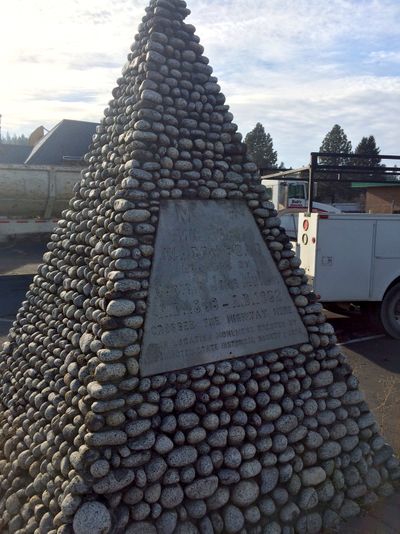Spokane Valley brushing up on history

When the Plantation Restaurant was torn down late last year, many Spokane Valley residents were confused: How could a Spokane Valley landmark like that be torn down?
And what was going to happen to the pyramid-shaped historical marker left behind on the corner of Vista Road and Sprague Avenue?
“There’s a lot of confusion about historic designation,” said Megan Duvall, historic preservation officer for the city of Spokane. “To get something on the national historical register is not going to save anything. Local government is where the protection is.”
The Plantation – a funky old river rock building that sat empty for years – was not protected in any way.
“You have to do something to get a building registered,” Duvall said. “Nobody is going to come to your door and do something to your property.”
Duvall recently gave a presentation to the Spokane Valley City Council, which is considering joining Spokane’s historic preservation office and adopting a historic preservation ordinance.
Jayne Singleton, director of the Spokane Valley Heritage Museum, is excited about that idea.
“That would just be wonderful,” Singleton said. “We are very supportive of that idea.”
Duvall said the foundation for any good preservation ordinance is a solid inventory.
“That lets us know what’s there and where it is,” said Duvall, adding that if Spokane Valley adopts a historic preservation ordinance, it can set its own criteria for what has historic significance for the Valley.
In the case of the historic marker, which commemorates the Mullan Road, it sits there “at the will of the good people of Spokane Valley,” Duvall said.
Singleton has done some research on the marker and discovered it sits in the city’s right-of-way.
“That may be good for us,” Singleton said.
If the marker has to be relocated, then Singleton has already located several other Mullan Road sites – including one near Plantes Ferry Park – where the marker would be historically appropriate.
“But it weighs something like 7 tons,” Singleton said. “I hope it can just stay there.”
At state level, there’s the Washington Information System for Architectural and Archaeological Records Data – known as WISAARD for short – which is an online searchable database of historical sites in Washington.
WISAARD shows 259 records of historical property in Spokane Valley, but that doesn’t mean those sites are protected.
“All this means is that we know where the sites are,” Duvall said.
Lately, Spokane Valley Heritage Museum has gotten some help from Eastern Washington University history professor Larry Cebula and his students. Cebula, who’s also the assistant digital archivist for Washington State Archives, has his students select, describe and enter sites into the website www.spokanehistorical. org. The site is also available as a smartphone application.
“We didn’t have a lot of listings from the Valley,” Cebula said, “so my students are focusing on the Valley during this quarter.”
Singleton said students have searched through the museum’s archives and – with museum volunteers – have entered almost 100 sites into a smartphone platform.
“We should be ready to go live with that pretty soon,” Cebula said. “Jayne is just amazing. She’s such a powerhouse.”
Duvall and Singleton have met and talked about a potential interlocal agreement between Spokane and Spokane Valley, allowing for a better inventory and more knowledge of what historical property is in the Valley.
“It makes sense to work together,” Duvall said. “We just need to figure out how we can do it.”